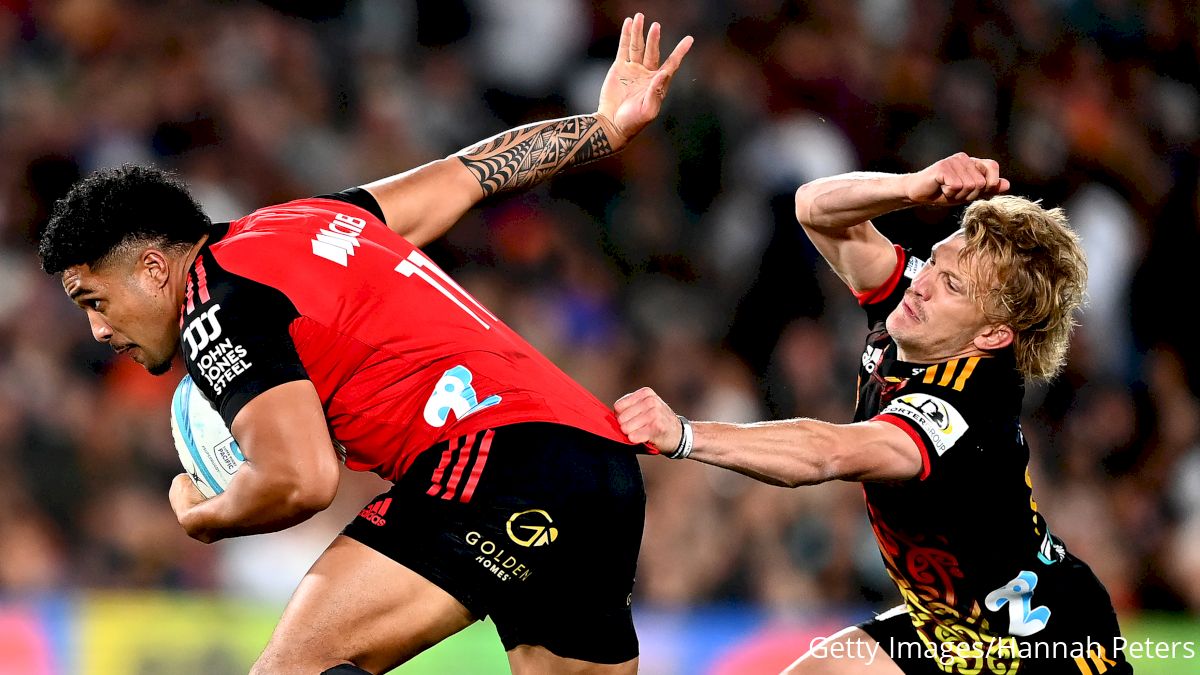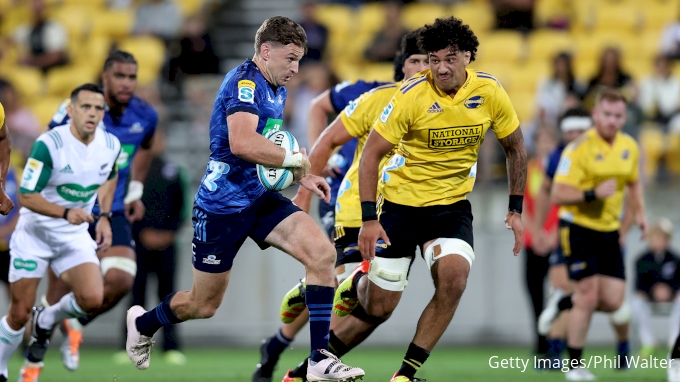Super Rugby Can Revive Itself With A Quasi-American Model
Super Rugby Can Revive Itself With A Quasi-American Model
Rugby continues to want more cash, but at the same time doesn’t want to change in order to earn it. Growth has to be achieved by finding a new way.

The Chiefs-Crusaders clash in front of a sold-out local crowd in Hamilton was a shot in the arm for Super Rugby this year.
It was a classic derby between two quality teams, with an energetic crowd that was hanging on the edge of their seats.
CHIEEEEFSSS 💪
— Super Rugby Pacific (@SuperRugby) May 3, 2023
Will @ChiefsRugby break their winning streak record this weekend when they take on the @Highlanders?#SuperRugbyPacific pic.twitter.com/ESIIfDTyNg
However, that it has taken 10 weeks to have a sellout in New Zealand does highlight issues: this should be happening far more frequently.
It can’t be denied that Super Rugby Pacific has to keep evolving to find a footing in the modern era.
The competition suffers from a number of issues: the overall parity across teams, fan apathy toward majority of the teams, lack of wider media coverage and the competition playoff structure.
The goal of Rugby Australia and New Zealand Rugby should be to create an entertainment product worth more than the All Blacks and Wallabies, not to have a competition subservient to those teams.
The South African split from Super Rugby still presents a unique opportunity to re-structure the league and adopt a quasi-American model to address the flaws with the competition.
There is a widely held belief that Australia can’t handle more than four teams, and that New Zealand can’t sustain more. That might be true under the current operating model but could be misguided under a different one.
Are you picking any upsets in Round 1️⃣1️⃣?
— Super Rugby Pacific (@SuperRugby) May 4, 2023
Get your tips in before Round 11 for a chance to win weekly prizes. Head to https://t.co/SqmZWE8yCC to sign up now! #SuperRugbyPacific pic.twitter.com/Wfq5SQ3NxO
New Zealand’s provincial competition had 14 teams in the mid-2000s. Sydney’s Shute Shield club competition in Australia built its own viable TV broadcast with 12 teams recently, which attracted crowds in the tens of thousands.
What is possible is only limited by the people running it and the rules they come up with. Change the rules, and new realities open up.
Rugby continues to want more cash, but at the same time doesn’t want to change in order to earn it. Growth has to be achieved by finding a new way, otherwise, it will continue to shrink.
One of the biggest commercial failings of New Zealand Rugby is not finding a way to work with Rugby Australia to get a piece of the Australian sports market, which is competitive, but a much, much larger pie than their own.
If they can work together on re-imagining Super Rugby into an elite sporting league and agree on a new revenue-sharing model, they both will end up in much stronger positions, if it is a success.
Taking steps to address the unequal distribution of playing talent across Super Rugby is a necessity to achieving that.
New Zealand’s stronger playing pool is not shared, leaving Australian teams to remain behind them most of the time. A ton of young New Zealand players who could be playing, simply aren’t.
We hear frequently of New Zealand fans lack of interest in watching Australian teams play, and even trans-Tasman clashes, if their own team isn’t featuring.
All Blacks and Wallabies’ eligibility must be expanded within Super Rugby to spread the playing resources, breaking the current mold.
As long as players are contracted within in the competition, they can remain available for international duty.
That alone is not going to guarantee top All Blacks will head to the Force or Rebels, but the option of such a move needs to be possible.
Once new boundaries around international eligibility allow for a flow of talent across the Tasman, a draft system for Super Rugby is needed.
Under the current model, Super Rugby clubs run their own academies and develop the talent they recruit coming out of school.
Much of the talent is often already coming from another region outside of their own.
This aspect can be maintained but with new financial rewards for the clubs who develop players into high draft picks.
Academy players would enter a three-year period of development in the club’s own system, before becoming eligible for a Super Rugby draft at around 20 or 21 years of age, or sooner, if the team agrees.
Super Rugby teams won’t be able to keep all the talent they nurture, but will be rewarded for investing in their development.
The governing body can set tiered bonuses payable to Super Rugby teams based on where their academy players are drafted.
These payments in turn can be used to help sign and retain experienced players, or invest further in development programs to reap the rewards available.
A club with a strong development program effectively has a new profit center, flipping young players in the draft for bonuses from the governing body.
By commercializing the Super Rugby draft as an annual event, TV rights and sponsorship deals would likely be significant once it becomes established.
The draft mechanism will ensure that talent is distributed fairly among teams to attempt to keep parity, along with bringing a hype-building fan event that brings exposure and excitement for new players on new teams.
The four bottom Super Rugby Pacific teams at the moment are based in Perth, Melbourne, Fiji and Auckland. Those destinations are not bad places to live for what is essentially a four-month competition.
Australian and New Zealand citizens can move freely and work between the two countries, but Fijian players may be subject to visa-requirements.
The length and maximum salary permitted for draft picks would need to be agreed between teams and player associations, but high draft picks would have to be rewarded more than what young Super Rugby players are currently.
If a top prospect can be rewarded handsomely at 21 years old, the incentive is there to take up deals with weaker teams.
A three-year max length deal allows for the player to reach free agency at 24-25 years of age where they could choose to return home or move to another team of their choice.
A proper free agency signing window would allow for players to reach the end of an agreement and test the market should they desire to do so.
Inter-league player movement is great for the competition to maintain the media spotlight and keep fans engaged, which currently is nearly non-existent. It creates theatre, fuels rivalries and a cycle of fan interest that is currently missing.
Every player and coach lost to European leagues, and now Japanese leagues, diminishes Super Rugby.

When Beauden Barrett left the Hurricanes for the Blues, his transformation from hero to villain, and the emotional response from the Hurricanes fans, added a sense of tribalism and meaning.
His return to Wellington in 2020 produced one of the biggest crowds at Sky Stadium for a Hurricanes’ game in years.
That is the pulling power of a good storyline that seems to be lost on rugby administrators currently. Narratives draw in viewers and become part of the on-field story.
Barrett’s deal was good business for the Blues and there was a silver lining for the Hurricanes, but that still wasn’t capitalized on enough with promotion.
Keeping high-profile names within the Super Rugby ecosystem has to be a priority for both New Zealand Rugby and Rugby Australia.
Once interest is re-captured in the competition and the commercial value grows, more options become available.
Salary caps for clubs will rise, growing a bigger pie to ward off suitors in Japan and France.
Top NRL prospects may actually have to consider the Super Rugby draft if it means a much bigger payday than a bargain basement squad deal.
The Chiefs-Crusaders clash was great, but shouldn’t that be happening every week? Super Rugby doesn’t have much to lose anymore but has everything to gain.
A total re-model by adopting a draft and free agency will move the competition towards an entertainment product unrivalled in either code.
For Rugby Australia and New Zealand Rugby, they have to think bigger than the Wallabies and All Blacks.
There is a professional league they could own which could be worth a lot more.